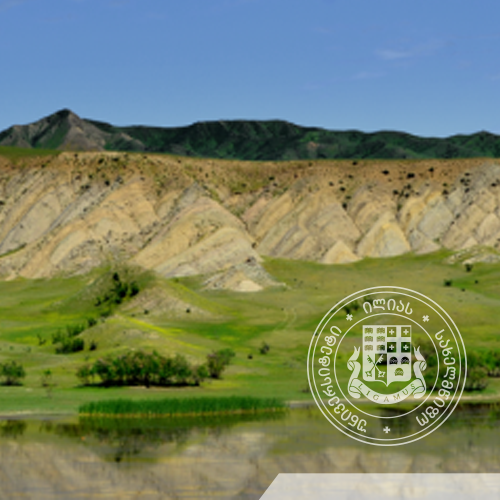
Active Deformations and Magnitude of Shortening in the Western Kura Fold-Thrust Belt
The Kura fold-thrust belt (KFTB), is described by several authors as a dominantly south-vergent, thin-skinned foldthrust belt deforming the Cenozoic sedimentary fill of the Kura Basin. The KFTB is separated from the Greater
Caucasus (GC) to the north along much of its length by the Alazani basin, but the fold-thrust belt merges with the main
range near 48E (in the East) and 45E (in the West).
The Greater Caucasus back-arc basin closes completely during the late Eocene to Pliocene and gives rise to the GC
Mountains. The Pliocene times mark an abrupt transition from a phase of convergence accommodated by subduction of
marginal basins into a ‘hard’ collisional phase dominated by the reactivation of sutures and leading to a generalized
uplift and diffuse deformation in the whole region. The KFTB is considered to be a southward propagation of the GC
into the Kura foreland. Recent studies of its Eastern segment estimated that for the last ~2Ma years, greater than 80%
of the shortening within Caucasus system is focused in KFTB.
Limited detailed information is available with regard to the age and lithology of sediments exposed within the KFTB.
Large-scale geologic or summary works attempt to classify strata based on regional stages defined by the
biostratigraphic framework of the Caspian Sea. However, these works generally assume that the lithology of sediments
within the whole of the Kura Basin is relatively constant within a regional stage, which is indirect conflict with the
predictions of the heterogeneous set of coeval sedimentary environments expected in foreland. Additionally, recent
work has shown that the correlation between the absolute timescale and biostratigraphically defined regional stages
within the Paratethyan realm can vary on the order of 1–2 million years between regions.
While the member of our research group Adam Forte has made a significant progress around the studying the Eastern
part of the KFTB, western part (WKTFB) still remains poorly investigated. According to regional stratigraphy PlioQuaternary layers of WKFTB are represented by deformed Akchagylian and Apsheronian sediments. Absolute dates of
these stages has never been estimated for the WKFTB region, therefor there is no well-constrained data regarding the
total shortening and the shortening rate as well.
Geodetic measurements indicate that there is an along-strike, eastward increasing velocity gradient between the Greater
and Lesser Caucasus, with approximately 8 mm/yr of expected convergence between the two ranges. However, GPS
stations did not constrain the location of shortening in detail because they are located within the nondeformed portion
of the Kura Basin, the Lesser Caucasus, and north of the range front of the GC.
1 |Annex №3
This project is about studying neotectonic deformations of the WKFTB, by the approaches that has never been used
before: Absolute datings of Plio-Quaternary deposits for getting sedimentation and deformation ages, constructing
balanced cross sections, estimating total shortening and shortening rates of the region. The project includes adding
additional GPS vectors within the WKFTB area to constrain the location of shortening and building the local geodetic
model of deformation.
Seismicity within the Kura fold-thrust belt and Kura Basin is sparse, but the majority of well-constrained earthquakes
have depths exceeding 10 km. During last years, seismic monitoring quality and the number of stations within the
study area has been increased, therefor seismic data will be significant source for the elaboration of the regional
neotectonic deformation model.
The results will have broad implications for regional seismic hazard, because investigating the localization of
shortening within the Eastern Kura fold-thrust belt contrasted with previously published models assessing regional
seismic hazard, which largely assumed that shortening is localized along the Greater Caucasus range front. This time
the project will assess the role of WKFTB in the regional active deformation model.)
Projects » View All
